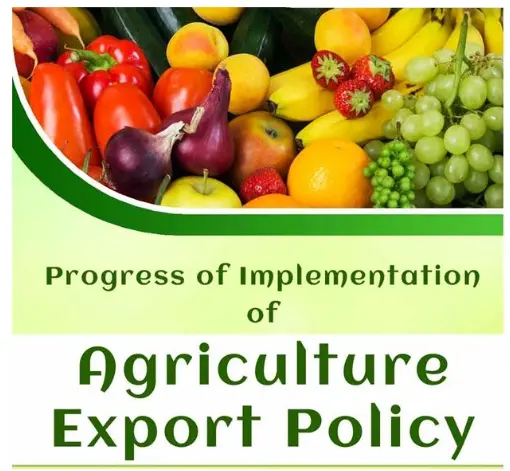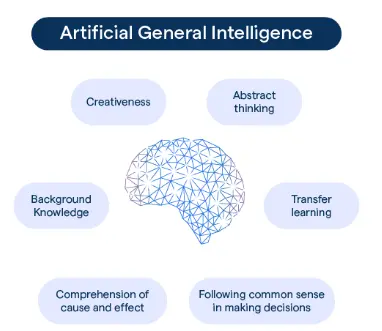Monday, 13th May 2024
Appreciation of the Rupee
In News: Over the past decade, the Indian Rupee experienced a depreciation of approximately 27.6% relative to the US dollar.

Decadal Journey of the Indian Rupee
Exchange Rate Overview
- An exchange rate is the rate at which one currency can be exchanged for another currency, representing the value of one currency in terms of another.
- It can be either fixed, floating, or managed float, depending on how it's determined.
- Various factors affect exchange rates, including interest rates, inflation, economic growth, political stability, and supply and demand dynamics.
Effective Exchange Rate (EER)
- The Effective Exchange Rate (EER) is a weighted average of a currency's exchange rates against other currencies, adjusted for inflation and trade competitiveness.
- It reflects the strength or weakness of a currency relative to a basket of other currencies, considering trade shares.
- Types of EER include Nominal Effective Exchange Rate (NEER) and Real Effective Exchange Rate (REER).
Types of EER
- Nominal Effective Exchange Rate (NEER)
- It's a simple average of bilateral exchange rates between the domestic currency and the currencies of major trading partners, weighted by trade shares.
- NEER indices are constructed by the Reserve Bank of India against different currency baskets.
- Real Effective Exchange Rate (REER)
- REER adjusts NEER for differences in inflation rates between the domestic economy and its trading partners.
- It provides a more accurate measure of a currency's trade competitiveness by accounting for changes in price levels.
Implications of Currency Depreciation on the Indian Economy
- Positive Impacts
- Boosts Exports: Cheaper exports can increase demand and boost export earnings.
- Inward Remittances: Weaker rupee can increase remittances from workers abroad, boosting disposable income in India.
- Negative Impacts
- Higher Import Costs: Imported goods become more expensive, leading to inflationary pressures.
- Costlier Foreign Debt: Repayment of foreign debt becomes more expensive, straining government finances.
- Discourages Foreign Investment: Depreciating rupee may signal economic instability, discouraging foreign investors.
|
UPSC Previous Year Questions Prelims (2019) Q. Which one of the following is not the most likely measure the Government/RBI takes to stop the slide of the Indian rupee? (a) Curbing imports of non-essential goods and promoting exports (b) Encouraging Indian borrowers to issue rupee-denominated Masala Bonds (c) Easing conditions relating to external commercial borrowing (d) Following an expansionary monetary policy Ans: (d) Prelims (2019) Q2. Consider the following statements:
Which of the above statements is/are correct? (a) 1 only Ans: (a) Mains (2018) Q. How would the recent phenomena of protectionism and currency manipulations in world trade affect macroeconomic stability of India? |
Source: IE
World Bank's Report on Creating a Sustainable Planet
In News: The recent Recipe for a Livable Planet Report from the World Bank indicates that annual investments totaling USD 260 billion are required to halve agrifood emissions by 2030 and ultimately achieve net zero emissions by 2050.
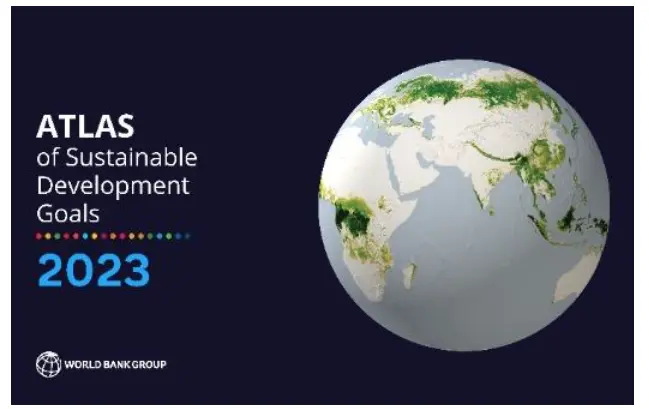
Key Highlights of the Reports
- Potential and Benefits of Agrifood System Reform
- The global agrifood system can reduce nearly a third of the world’s GHG emissions through accessible measures, enhancing food security and climate resilience.
- Agrifood contributes roughly one-third of global GHG emissions, with about three-quarters originating from developing countries, emphasizing the need for targeted mitigation actions.
- Big Opportunities Highlighted
- The agrifood sector offers significant, cost-effective opportunities for climate action, including drawing carbon from the atmosphere through enhanced land management.
- Halving agrifood emissions by 2030 would yield substantial returns, outweighing costs with beneficial impacts on health, the economy, and the environment.
- High-income countries should reduce agrifood energy demands and support lower-income countries, while middle-income countries can achieve emissions reductions through better land use management.
- Low-income countries can focus on sustainable growth strategies like agroforestry, leveraging innovations and investments for inclusive stakeholder participation.
- Key Highlights Related to India
- India ranks among the top three countries in terms of total annual agrifood system emissions, offering significant cost-effective mitigation potential through adopting measures like better livestock feeding and breeding.
- The adoption of interventions such as intermittent irrigation and promoting methane-reducing crop varieties can substantially cut agrifood emissions by 2030.
- India's high rates of food loss and waste present another avenue for impactful mitigation efforts.
- International financial and technical support will be crucial for India to realize its agrifood mitigation potential.
- Way Forward
- Governments and businesses should de-risk private climate investments in agrifood through blended finance and corporate accountability.
- Policymakers should implement measures to accelerate agrifood system transformation, including repurposing harmful subsidies and ensuring policy coherence.
- Improving GHG monitoring systems using digital technologies can unlock climate finance for the sector.
- Expanding cost-effective mitigation technologies and increasing R&D investments are essential for driving the future transformation of agrifood systems.
- International frameworks and national policies must facilitate agrifood mitigation opportunities in a coordinated manner, ensuring a just transition by protecting vulnerable groups like smallholder farmers through stakeholder engagement and benefit sharing.
|
UPSC Previous Year Questions Prelims (2016) Q. Gadgil Committee Report’ and ‘Kasturirangan Committee Report’, sometimes seen in the news, are related to (a) constitutional reforms Ans: (d) Prelims (2021) Q. Consider the following statements:
Which of the statements given above is/are correct? (a) 1 only (b) 3 only (c) 1 and 2 (d) 2 and 3 Ans: (d) |
Source: WB
Auroras
In News: In the early hours of Saturday morning, the night sky over Hanle village in Ladakh was illuminated by the spectacular display of the northern lights, also known as the aurora borealis.

Understanding Auroras
- Definition and Appearance
- Auroras are natural light displays in Earth's sky, primarily visible in high-latitude regions such as the Arctic and Antarctic.
- They manifest as dynamic patterns of brilliant lights, resembling curtains, rays, spirals, or flickers covering the entire sky.
- Northern Lights (Aurora Borealis)
- Also called the Northern Lights, this phenomenon occurs in the northern hemisphere, particularly in regions near the Arctic Circle.
- Countries like Norway, Sweden, Finland, Iceland, Canada, and Alaska often witness the Northern Lights.
- Charged particles from the sun, including electrons and protons, collide with the Earth’s magnetosphere and interact with gases in the atmosphere, resulting in colorful displays primarily in green, red, and purple hues.
- Southern Lights (Aurora Australis)
- Known as the Southern Lights, it occurs in the Southern Hemisphere, mainly around the Antarctic Circle.
- Countries such as Australia, New Zealand, Antarctica, and parts of southern South America can observe the Southern Lights.
- Similar to the Northern Lights, charged particles from the sun interact with the Earth’s magnetic field and atmosphere in the Southern Hemisphere, creating colorful light displays.
- Phenomenon Explanation
- Auroras are caused by activity on the surface of the Sun, which continuously releases charged particles and magnetic fields called the solar wind.
- As the solar wind interacts with the Earth's magnetic field, some charged particles are trapped and travel down magnetic field lines to the poles, interacting with gases in the upper atmosphere and producing flashes of light.
- Different gases produce varying colors when interacting with solar wind particles, such as green from oxygen and blue/purple from nitrogen.
- Expansion to Midlatitudes
- During periods of strong solar activity, auroras can expand to midlatitudes.
- Solar flares and coronal mass ejections (CMEs) increase solar wind activity, potentially causing geomagnetic storms.
- Geomagnetic storms, disruptions of Earth's magnetic field, can affect various systems including GPS, communications, power grids, and space exploration programs.
- Recent aurora events observed in many regions of the world were triggered by a geomagnetic storm caused by a CME striking the Earth from the AR13664 region of the sun.
Source: TH
FEMA Regulations
In News: The Reserve Bank of India has recently relaxed Foreign Exchange Management Act (FEMA) regulations to simplify foreign investment in derivatives.
Recent FEMA Regulations
- Amendments Objective
- The recent amendments aim to simplify margin management for trading in permitted derivatives, both domestically and internationally.
- Facilitating Foreign Investment
- Foreign investors will find it more convenient to invest in derivative instruments following amendments to the FEMA regulations by the RBI.
- Present Mechanism
- RBI lists various permitted derivative contracts including interest rate derivatives and equity derivatives.
- Interest-bearing accounts in Indian Rupees and/or foreign currency for collecting margin in India for permitted derivative contracts are allowed by RBI.
- Recent Changes
- Authorized Dealers (ADs) in India are now permitted to allow persons resident outside India to open, hold, and maintain interest-bearing accounts for margin purposes.
- The permitted derivative contracts remain similar to the previous provisions under the present mechanism.
- Benefits for Non-Residents
- Non-residents can open and maintain interest-bearing accounts with ADs in India for margin-related purposes, earning interest on these funds.
- Dedicated accounts for margin requirements facilitate easier management of margin obligations and funds related to permitted derivative contracts in India.
Understanding Foreign Exchange Management Act, 1999
- Framework Overview
- The Foreign Exchange Management Act, 1999 provides the legal framework for administering foreign exchange transactions in India.
- Classification of Transactions
- Transactions involving foreign exchange are categorized under either capital or current account transactions.
- Current Account Transactions
- Current account transactions involve activities that do not alter a resident's assets or liabilities outside India.
- Examples include payments related to foreign trade, expenses for foreign travel, and educational expenses.
- Capital Account Transactions
- Capital account transactions involve activities that alter a resident's assets or liabilities outside India.
- Examples include investments in foreign securities and acquisition of immovable property outside India.
- Definition of Resident Indians
- A 'person resident in India' is defined in Section 2(v) of FEMA, 1999 as someone residing in India for more than 182 days during the preceding financial year or any person or body corporate registered or incorporated in India.
|
UPSC Previous Year Questions Prelims (2013) Q. Which one of the following groups of items is included in India’s foreign-exchange reserves? (a) Foreign-currency assets, Special Drawing Rights (SDRs) and loans from foreign countries (b) Foreign-currency assets, gold holdings of the RBI and SDRs (c) Foreign-currency assets, loans from the World Bank and SDRs (d) Foreign-currency assets, gold holdings of the RBI and loans from the World Bank Ans: (b) Mains (2021) Q. Discuss how emerging technologies and globalisation contribute to money laundering. Elaborate measures to tackle the problem of money laundering both at national Mains (2018) Q. India’s proximity to the two of the world’s biggest illicit opium-growing states has enhanced her internal security concerns. Explain the linkages between drug trafficking and other illicit activities such as gunrunning, money laundering and human trafficking. What counter-measures should be taken to prevent the same? |
Source: BL
Sperm Whale
In News: For the first time, researchers investigating sperm whales have outlined the fundamental components of their potential communication methods.
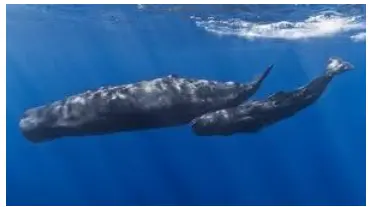
The Enigmatic Sperm Whale and its Precious Byproduct, Ambergris
- Introduction:
- The sperm whale, scientifically known as Physeter macrocephalus, stands as the largest of the toothed whales.
- Recognizable by its massive square head and narrow lower jaw, it holds the distinction of having the largest head and brain of any animal on Earth.
- Distribution:
- Sperm whales boast one of the most expansive global distributions among marine mammals, inhabiting all deep oceans from the equator to the edges of the Arctic and Antarctic pack ice.
- Physical Features:
- These magnificent creatures typically exhibit a dark blue-gray or brownish hue, accented by white patches on their bellies.
- Notably, they possess small paddle-like flippers and a series of rounded humps along their backs.
- Lifespan:
- Sperm whales can live up to 60 years, making them some of the longest-living cetaceans.
- Social Behavior and Communication:
- Highly social mammals, sperm whales communicate with each other using a complex system of clicks known as codas.
- Each coda serves a distinct purpose, aiding in their social interactions and coordination.
- Ambergris:
- Ambergris, often dubbed "Floating Gold," is a rare substance extracted from the bile ducts in the intestines of sperm whales.
- While initially light yellowish in color, it transforms into a waxy, solid, and inflammable material.
- Chemical Composition:
- This enigmatic substance contains alkaloids, acids, and a compound called ambrein, akin to cholesterol.
- Its unique composition contributes to its highly sought-after status in the international market.
- Utilization:
- Ambergris finds its predominant use in the creation of perfumes and fragrances.
- Possession and trade of this substance are banned in countries like the USA, Australia, and India due to conservation concerns, despite its high demand and value in certain industries.
Source: HT
Kamikaze Drones
In News: Amid the ongoing conflict in Ukraine, Russia's deployment of the Lancet Kamikaze drone underscores intricate global supply chain dynamics, as it integrates American AI technology.
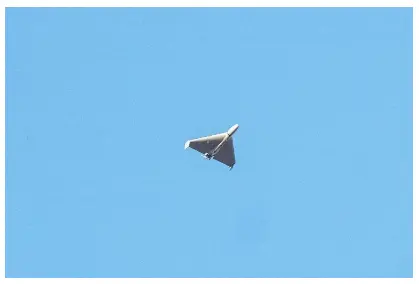
Exploring Kamikaze Drones: Small, Lethal, and Evocative
- Introduction:
- Kamikaze drones, also known as Switchblade drones, represent small unmanned aircraft armed with explosives.
- They are designed to be flown directly at targets such as tanks or groups of troops, detonating upon impact to inflict damage.
- Origin and Naming:
- The term "Kamikaze" draws from the feared Japanese pilots of World War II who conducted suicide attacks by crashing explosive-filled aircraft into enemy targets.
- Features:
- Modern versions of these drones possess the ability to bypass traditional defenses, offering a cost-effective alternative to larger counterparts.
- Their compact size makes them challenging to detect on radar.
- Utilizing facial recognition technology, these drones can be programmed to autonomously identify and strike targets without human intervention.
- Global Presence:
- While the United States may boast the most advanced Kamikaze drone in this category, other countries such as Russia, China, Israel, Iran, and Turkey have developed their own versions.
Source: TOI
T Cells
In News: New findings from a clinical trial offer insights into the efficacy of infusions containing regulatory T cells, aimed at modulating the immune response, particularly in pediatric patients diagnosed with type 1 diabetes.

Unveiling the Role and Functionality of T Cells in the Immune System
- Introduction:
- T cells, also known as T lymphocytes or thymocytes, represent a subset of white blood cells crucial for immune function.
- They originate from stem cells within the bone marrow and play a pivotal role in defending the body against infections and potentially combating cancerous cells.
- Types of T Cells:
- Cytotoxic T-cells: These specialized T cells are tasked with the destruction of infected cells within the body.
- Helper T-cells: Functioning as coordinators of the immune response, helper T-cells transmit signals that guide other immune cells in combatting infections.
- Functionality:
- T cells exhibit specificity in their immune response, targeting particular antigens rather than attacking indiscriminately.
- Equipped with numerous identical T-cell receptors covering their surfaces, T cells can only bind to antigens possessing a specific shape.
- Upon encountering their corresponding viral antigen on an infected cell, Killer T-cells release cytotoxins aimed at eliminating the infected cell from the body.
Source: TH
Panama Canal
In News: Panama stands on the brink of a significant shift in its immigration policy, a change that has the potential to echo from the dense Darien jungle to the United States border.
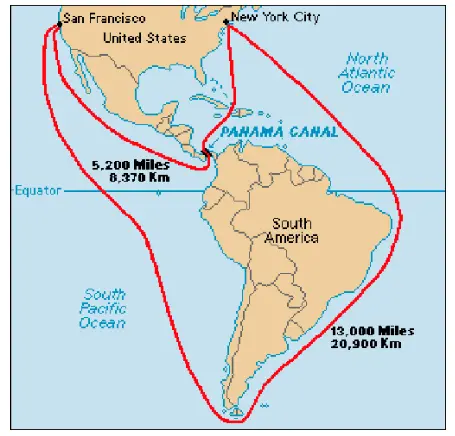
Exploring Panama: A Land of Diversity and the Panama Canal
- Introduction:
- Panama, situated in Central America on the Isthmus of Panama, serves as a pivotal link connecting North and South America. Bordered by Costa Rica and Colombia, it boasts a strategic location between the Caribbean Sea and the North Pacific Ocean.
- Geographical Features:
- Encompassing the isthmus and over 1,600 islands off its Atlantic and Pacific shores, Panama is famed for housing the Panama Canal, a vital waterway slicing through its midsection.
- The country hosts the largest rainforest in the Western Hemisphere outside the Amazon Basin.
- Cultural Diversity:
- The population of Panama comprises descendants of indigenous peoples, Europeans, Afro-Caribbeans, and immigrants from various corners of the globe.
- Key Information about the Panama Canal:
- The Panama Canal is an engineered marvel, facilitating maritime passage between the Atlantic and Pacific oceans across the Isthmus of Panama.
- Among the world's most strategic artificial waterways, it spans approximately 80 kilometers in length.
- Constructed by the United States between 1904 and 1914, the canal officially opened on August 15, 1914.
- Since 1999, the Republic of Panama has owned and administered the canal, following its transfer from the United States.
- The canal features a series of locks that regulate water levels, enabling ships to traverse the continental divide with ease.
Source: TH
Kawasaki Disease
In News: Recently, two infant girls diagnosed with Kawasaki disease, a condition characterized by inflammation of blood vessels, received successful treatment at Coimbatore Medical College and Hospital (CMCH).
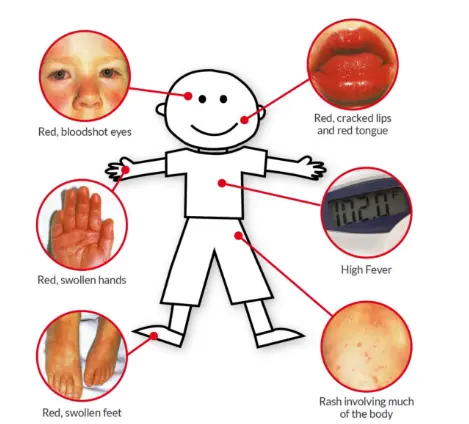
Understanding Kawasaki Disease: A Rare Heart Condition in Children
- Introduction:
- Kawasaki disease is a rare heart condition characterized by a high fever and inflammation of the blood vessels.
- Primarily affecting children under the age of 5, it represents one of the leading causes of heart disease in this demographic.
- Key Features:
- The disease triggers an immune response targeting blood vessels, leading to inflammation and swelling.
- Notably, Kawasaki disease often impacts the coronary arteries, crucial for transporting blood to the heart muscle.
- Additionally, it can manifest in issues with lymph nodes, skin, and the mucous membranes of the mouth, nose, and throat.
- Clinical Presentation:
- Common clinical signs include fever, rash, swelling of the hands and feet, redness and irritation of the eyes, swollen lymph glands in the neck, and inflammation of the mouth, lips, and throat.
- Historical Background:
- Kawasaki disease was initially documented in Japan by Tomisaku Kawasaki in 1967, with the first cases outside of Japan reported in Hawaii in 1976.
- Epidemiology and Seasonality:
- The exact cause of Kawasaki disease remains unknown, although its occurrence tends to peak in late winter and early spring.
Source: TOI
Deadbots
In News: A recent study emphasizes the importance of exercising caution in the development of Artificial Intelligence (AI) chatbots intended to emulate deceased loved ones, commonly referred to as 'deadbots'.
Exploring Deadbots: AI-Enabled Representations of Departed Loved Ones
- Introduction:
- Deadbots, also referred to as griefbots, are AI-enabled digital representations of deceased individuals, aiming to simulate their language patterns and personality traits using available digital footprints.
- Functionality:
- These chatbots utilize the digital footprint of the departed, including emails, social media posts, and voice recordings, to create conversational AI that mirrors their personality.
- The aim is to provide comfort by enabling individuals to interact with a digital version of their deceased loved ones.
- Concerns:
- Researchers caution that while Deadbots may offer solace, there's a risk of psychological distress if not designed with safety protocols in place.
- Cultural differences may influence the acceptance and adoption of such technologies, with solutions embraced enthusiastically in one context but rejected in another.
- Understanding Conversational AI:
- Conversational AI refers to artificial intelligence capable of simulating human conversation, powered by natural language processing (NLP).
- This technology leverages Google's foundation models, enabling new generative AI capabilities.
- Combining NLP, foundation models, and machine learning, Conversational AI systems are trained on vast amounts of data, teaching them to understand and process human language.
- Through continuous learning and interaction, these systems improve their ability to engage with humans naturally, enhancing response quality over time.
Source: DTE
Time for a New Approach to Minority Welfare in India
In News: The report from the Economic Advisory Council to the Prime Minister highlights major demographic changes in India's minority communities between 1950 and 2015. It expresses concerns about fair resource allocation and suggests sub-categorizing minorities to ensure equal distribution of welfare benefits.
UN Declaration on Minority Rights
- Adoption and Context
- The United Nations adopted the Declaration on the Rights of Persons Belonging to National or Ethnic, Religious, and Linguistic Minorities (UNDM) on December 18, 1992.
- This period coincided with global upheavals like the disintegration of the Soviet Union and Yugoslavia, making it a crucial time for minority rights advocacy.
- Responsibilities of States
- According to Article 1 of the declaration, each state is responsible for safeguarding and promoting the existence and identity of minorities within their territories.
- Countries are encouraged to establish legislation to address minority rights issues.
- Legally Binding Provisions
- While the UNDM is non-binding, there are legally binding provisions at the international level such as Article 27 of the International Covenant on Civil and Political Rights and Article 30 of the Convention on the Rights of the Child.
India's Commitment to Minority Rights
- India established the National Commission for Minorities in 1993, recognizing Muslims, Christians, Sikhs, Buddhists, Parsis, and Jains as minority communities.
- Prior to this, India consistently upheld the rights of minority groups, providing refuge to persecuted communities like the Parsis and Jews.
Recent Economic Advisory Council Report
- The report titled 'Share of Religious Minorities – A Cross-Country Analysis' highlights population trends among minority communities in India.
- It notes increases in the Muslim, Christian, Sikh, and Buddhist populations, while the Jain and Parsi populations have declined.
Concerns Raised
- Unequal Growth Among Minorities
- While some minority populations have increased, there are disparities, particularly with the decline of the Jain and Parsi populations.
- Resource Allocation Issues
- Concerns arise regarding the unequal distribution of welfare schemes and benefits among minority communities.
- Discontent within the Christian community in Kerala is cited as an example.
- Potential Social Divisions
- The declining Hindu population raises questions about secularism and the structure of India's population pyramid.
- There are concerns about fiscal imbalances and social divisions resulting from demographic shifts.
Way Forward
- Sub-Categorisation and Resource Management
- Consideration of sub-categories within minority groups and smart resource allocation are suggested to effectively design government welfare schemes.
- Language Education and Border Controls
- Emphasis should be placed on language education and strengthening border controls and immigration policies.
- Formal Inclusion and Revising Definitions
- Formal inclusion of linguistic minorities and revising the definition of minority status are recommended to broaden the scope of minorities in India.
Conclusion
- India faces significant demographic shifts within its minority communities, necessitating tailored policies for welfare and resource allocation.
- It is crucial to revisit definitions and policies to address disparities and maintain social harmony, leveraging India’s demographic potential for economic growth.
Source: News18
Share the article
Edukemy’s Current Affairs Quiz is published with multiple choice questions for UPSC exams
MCQ
Get Latest Updates on Offers, Event dates, and free Mentorship sessions.

Get in touch with our Expert Academic Counsellors 👋
FAQs
UPSC Daily Current Affairs focuses on learning current events on a daily basis. An aspirant needs to study regular and updated information about current events, news, and relevant topics that are important for UPSC aspirants. It covers national and international affairs, government policies, socio-economic issues, science and technology advancements, and more.
UPSC Daily Current Affairs provides aspirants with a concise and comprehensive overview of the latest happenings and developments across various fields. It helps aspirants stay updated with current affairs and provides them with valuable insights and analysis, which are essential for answering questions in the UPSC examinations. It enhances their knowledge, analytical skills, and ability to connect current affairs with the UPSC syllabus.
UPSC Daily Current Affairs covers a wide range of topics, including politics, economics, science and technology, environment, social issues, governance, international relations, and more. It offers news summaries, in-depth analyses, editorials, opinion pieces, and relevant study materials. It also provides practice questions and quizzes to help aspirants test their understanding of current affairs.
Edukemy's UPSC Daily Current Affairs can be accessed through:
- UPSC Daily Current Affairs can be accessed through Current Affairs tab at the top of the Main Page of Edukemy.
- Edukemy Mobile app: The Daily Current Affairs can also be access through Edukemy Mobile App.
- Social media: Follow Edukemy’s official social media accounts or pages that provide UPSC Daily Current Affairs updates, including Facebook, Twitter, or Telegram channels.

